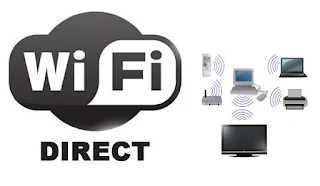What is WiFi Direct?
Wi-Fi Direct is a peer-to-peer specification that allows devices certified for Wi-Fi Direct to exchange data without an Internet connection or a wireless router. Wi-Fi Direct will provide essentially the same service to end users that Bluetooth does, but it is faster and allows devices to be farther apart when communicating.
Wi-Fi Direct is based on the IEEE 802.11 family of standards for wireless local area network (WLAN) operation. Products that receive the certification will be designated "Wi-Fi CERTIFIED Wi-Fi Direct."
Unlike conventional Wi-Fi, which is primarily used for getting online, Wi-Fi Direct is intended for sharing media across platforms and doesn't require routers or access points. Its closest analog is old-fashioned ad hoc networking, an early Wi-Fi option that linked two or more devices directly without stopping at a router along the way.
According to Greg Ennis, technical director of the Wi-Fi Alliance, Wi-Fi Direct updates the ad hoc concept. "Ad hoc networking doesn't really support the latest Wi-Fi advances," he says. Wi-Fi Direct is easier to set up, more secure, and way faster it can move data at up to 250 megabits per second; traditional ad hoc is limited to 11 Mbps. Wi-Fi Direct is also significantly faster than Bluetooth, which typically tops out at 3 Mbps, and it has a longer range (200 feet to Bluetooth's 30 feet). So for a quick and easy transfer of a big file, it's definitely the way to go.
WiFi Direct: History
The need to wirelessly send data to nearby devices without the use of other hardware is not a new thing. One of the first and most widespread solutions was Bluetooth, which has been around since 1998. Bluetooth is awesome for connecting peripherals to a computer (like mice or keyboards) or using a wireless headset, as these don't require fast data transfers. Bluetooth is not a fast technology, and setting it up is not hassle-free either.
But WiFi is different: it has high speeds, and it's much easier to configure. This is why WiFi Direct was invented: it is a technology for fast, wireless transfers of files between devices and, thanks to the much easier configuration, it can also be used for connecting basically anything wirelessly.
The first big company to support WiFi Direct was Intel: they introduced the new standard on their Centrino 2 platform in 2008. Then, two years later, other big players of the networking industry followed, as Marvell, Atheros, Broadcom, Ralink, and Realtek all launched their first products in October 2010 - it is quite possible that your computer's WiFi card is made by one of these manufacturers.
Google introduced WiFi Direct support exactly a year later with Android 4.0, while Blackberry OS received this update with version 10.2, and the first Xbox to support it is Xbox One, released in 2013. Windows supports the standard since Windows 8 on PC, while Windows Phone doesn't have official support for it yet, although there are some apps that enable file sharing over WiFi without the need for a third device.
How Does WiFi Direct Work?
The main ideas when developing the WiFi Direct standard were quite simple: make it easy to set up, have it support all kinds of services and make it just as fast as any other WiFi connection. The second and third are self-explanatory, since WiFi Direct is based on "regular" WiFi, so it doesn't have any drawbacks.
The way it works is rather simple too: one device discovers the other just like it would discover a wireless network, you enter a password or push a button and voilá, the devices are connected. No need to set up visibility, match long numeric codes or put up with any of the problems Bluetooth has. And to top it all, only one of the devices has to be compatible with WiFi Direct.
Essentially, when you connect two devices via WiFi Direct, one of them creates an access point similar to a router and the other device connects to it. You don't have to do it manually, it's all automatic. The available features vary, depending on what kind of devices are connected: you can print to a wireless printer, send pictures to a digital picture frame, send files from a phone to a computer, or play music or movies on a TV from a music player or phone. There are quite a lot of possibilities. Oh, and about passwords: you can forget about them. WiFi Direct relies on WiFi Protected Setup (WPS) which is a simple way to securely connect two devices via WiFi. Just like with modern routers, you only have to enter a number displayed on the screen or press a button, and the devices connect.
Conclusion
With its simple setup, longer range and much higher transfer speeds, WiFi Direct is a better option than Bluetooth for wireless file transfers between two devices. Setup and range also make it a great alternative for Bluetooth in other areas, like peripheral connection: some analysts even predict the death of Bluetooth, which is reasonable, as WiFi Direct eliminates the need for another standard and hardware.



0 comments